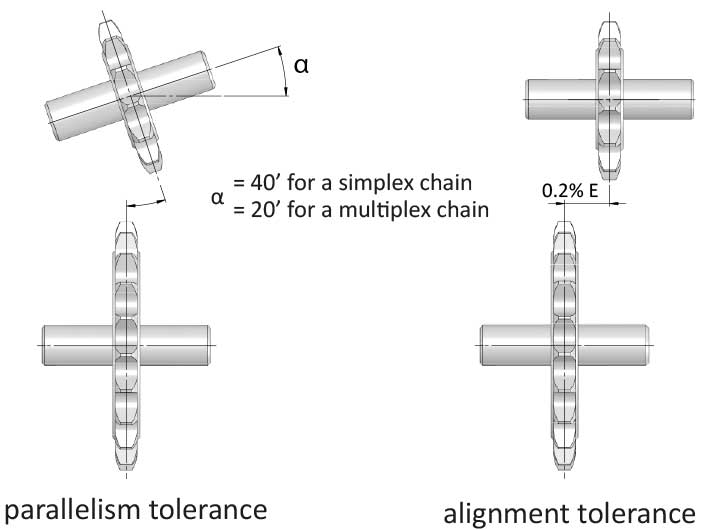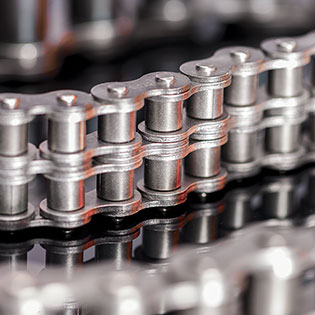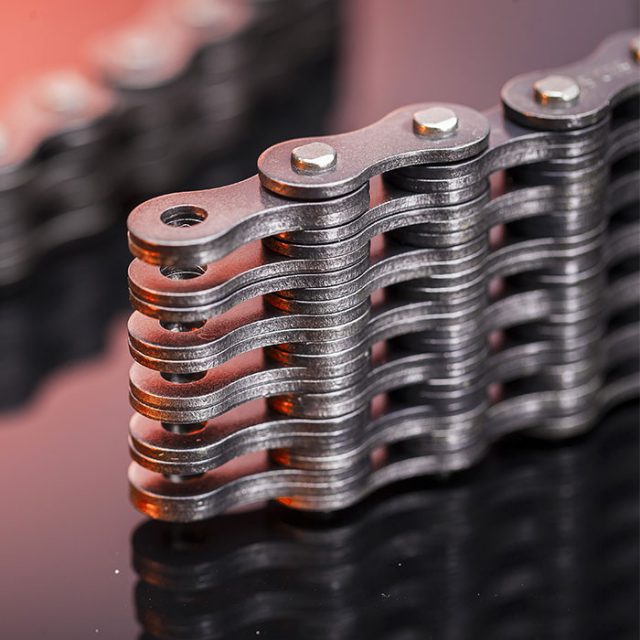• Defects in shaft parallelism should be less than 40’ for a simplex chain and 20’ for a multiple row chain.
• Defects in alignment must be less than 0,2% out of line of the shaft centers. This limit falls to 0,1% for rapid transmissions. If it is impossible to avoid transverse shaft mov- ment, the sprockets must be aligned in a median position. Sprocket alignment is especially important for multiple strand chains, because of their reduced transverse flexibility.
The consequences of geometry defects are:
• A noisy and vibrating transmission,
• A side wearing of the sprocket teeth and/or the chain inner plates,
• Stresses which may lead to the complete destruction of the chain,
• Improper distribution of the forces on the chain plates when resistance and particularly fatigue limit can be considerably reduced.
• Sprocket teeth concentricity and runout tolerances lies within limits laid down by the standard ISO 606 and should not be altered by assembly (for example when keying a sprocket to a shaft).
• The rigidity of assembly should be such that sprockets alignment and shaft parallelism are not affected by driving forces of the chain when operating.
Chain technique
Installation precision
Transmission

Lifting
• Defects in the alignment and parallelism of fixings and counter motion apparatus should be reduced as much as possible.


